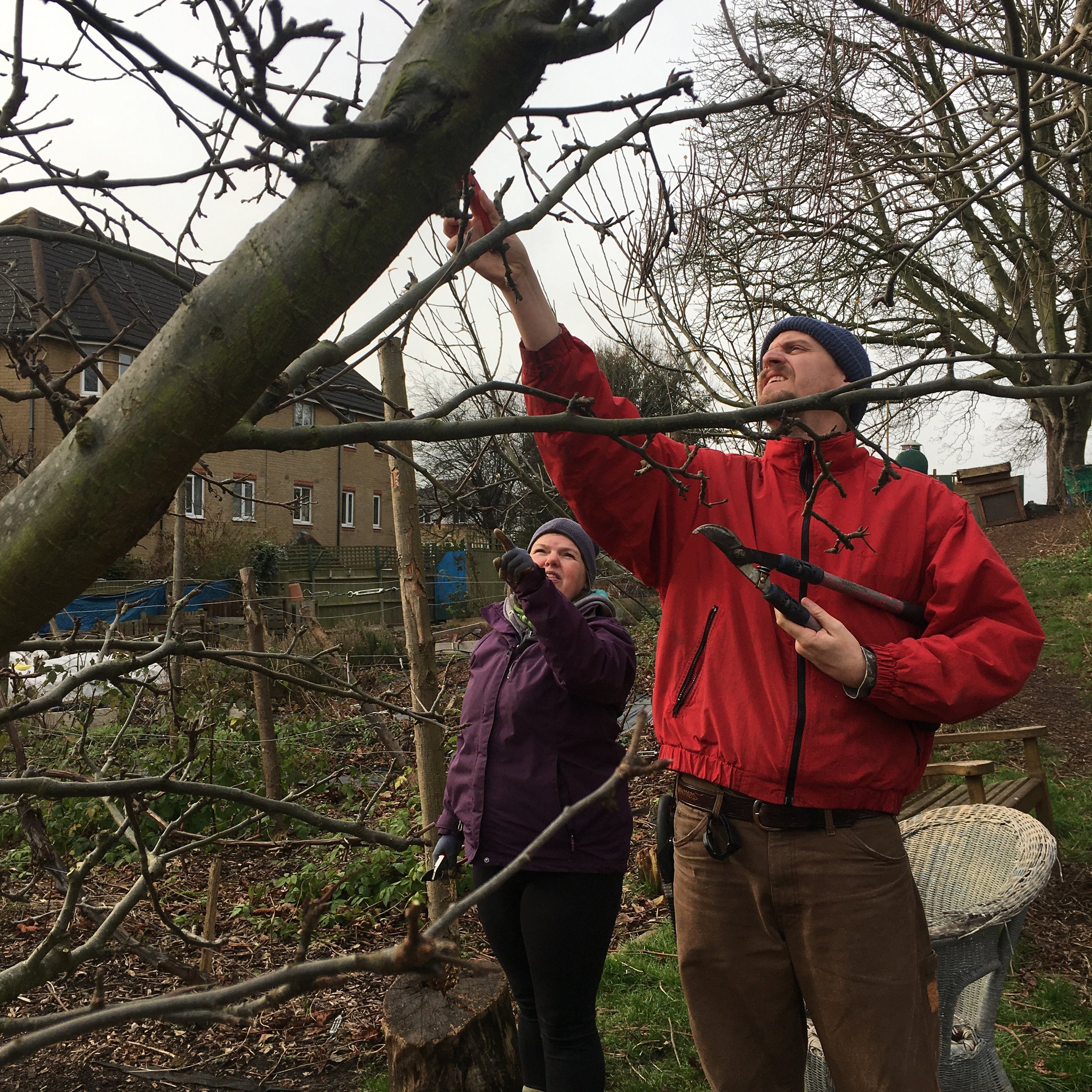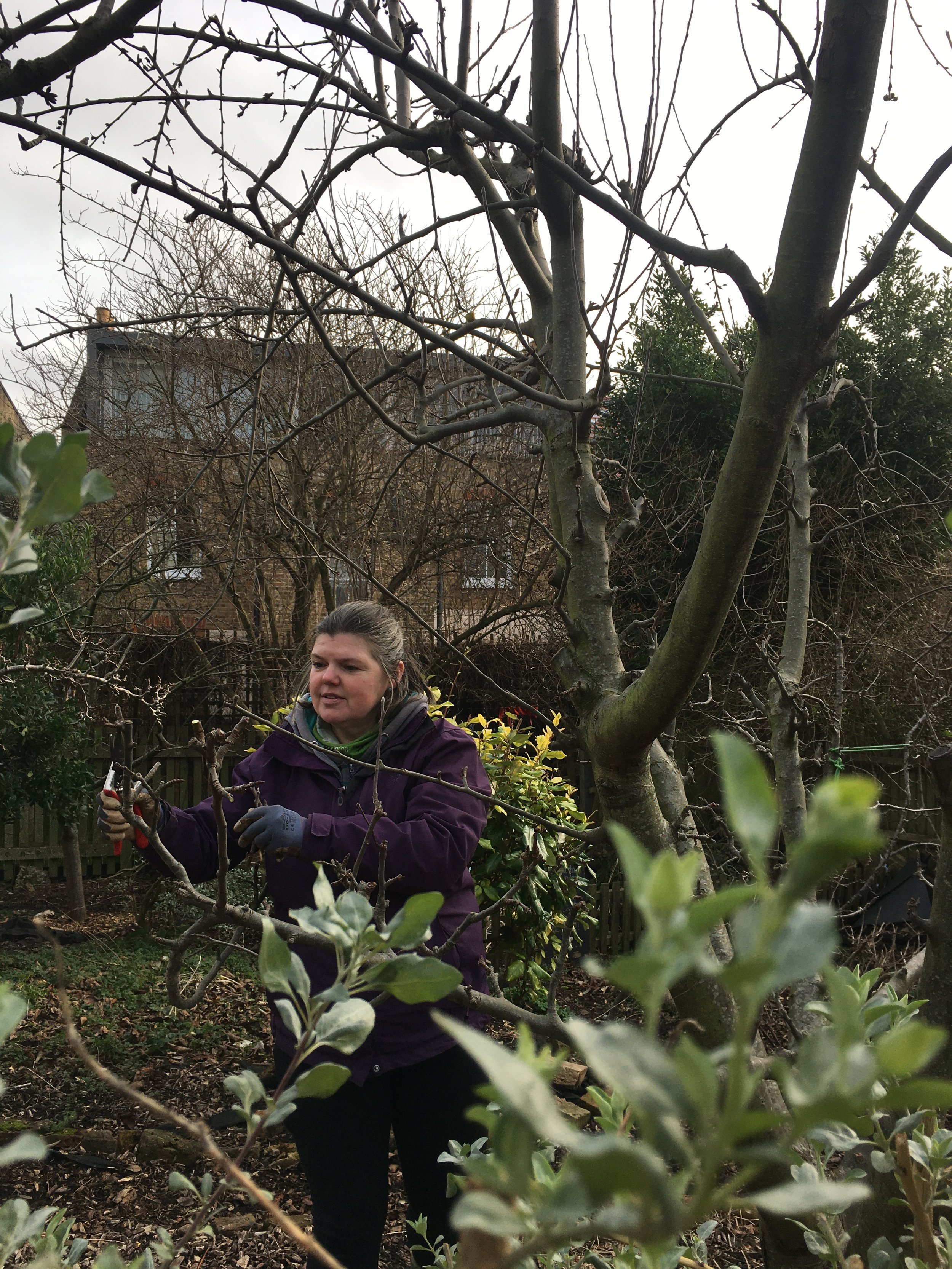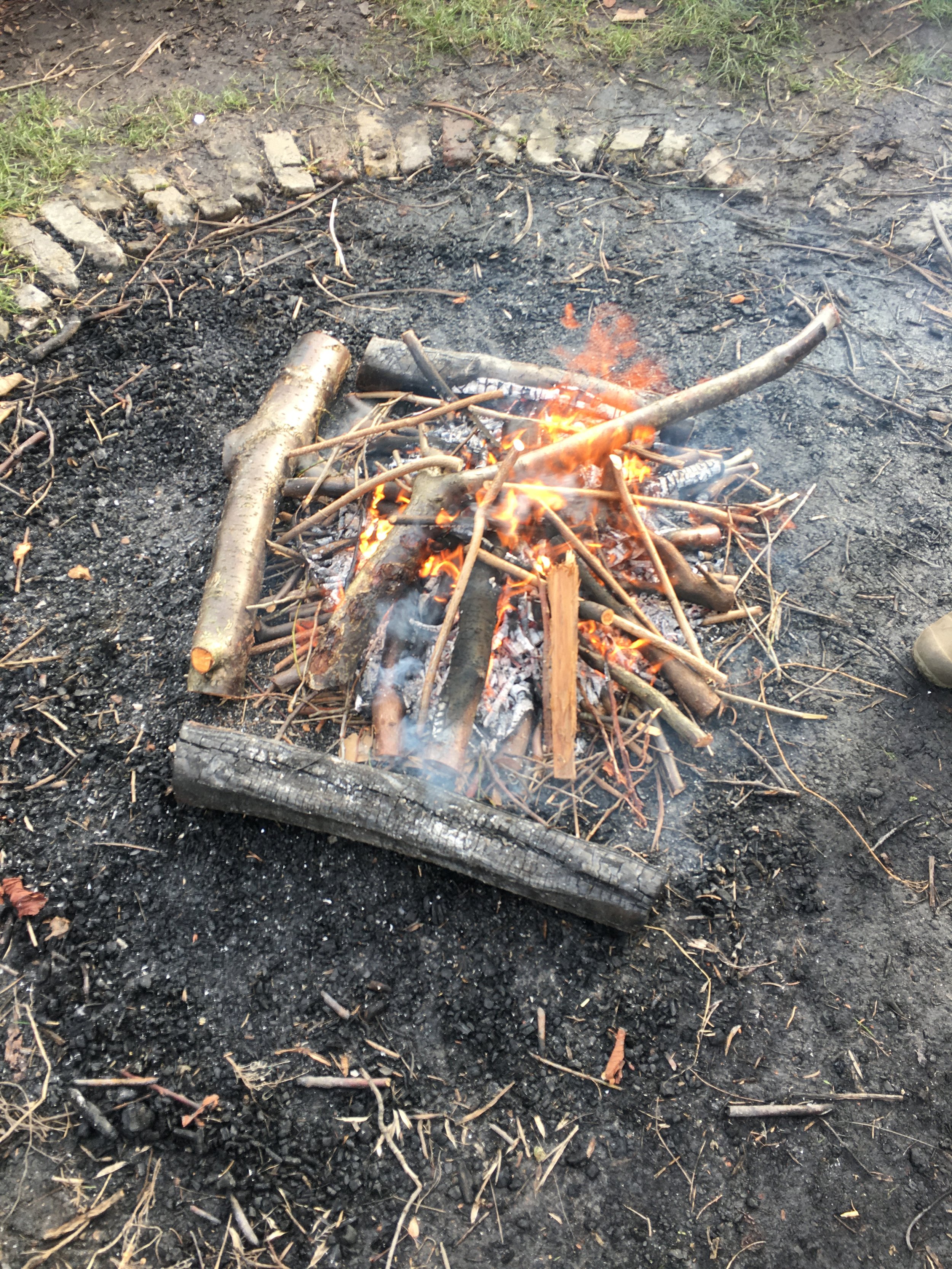Month in the life of a gardener: January.
The tasks, problem solving, wildlife spots, learnings and reflections from an organic food grower in a North London kitchen garden.
Welcome to this separate reflection on what it’s like to be an urban organic food grower. I started sharing these insights in March 2023 with snappy videos that condensed moments from across a month, but realise that there’s an opportunity to more deeply share learnings and mistakes with you, rather than just funny little tidbits with no context.
Watch reels of previous months here →
December 2023. / November 2023. / October 2023. / September 2023. / August 2023. / July 2023. / June 2023. / May 2023. / April 2023. / March 2023.
These stories form part of the Food-Fibre-Fashion publication shared to Substack and LinkedIn. There will be stories and musings to raise your awareness of how interconnected our food, fibre and fashion systems are, even when we’re looking in small scale, such as an urban garden.
This is the third in this series of articles — A Month in the Life of an Urban Gardener. To read about the context of where I work, head to the first article.
Watch January 2024 in the form of a reel here.
Listen here or on Spotify:
Wassailing the apple trees.
“Old apple tree, we'll wassail thee,
And hoping thou wilt bear.
The Lord does know where we shall be
To be merry anither year.
To blow well and to bear well,
And so merry let us be;
Let ev'ry man drink up his cup
And health to the apple tree.”
Images: Overlooking the main bit of the garden, with photos taken on 8th January and 27th January respectively. The later date is a little more sunny.
Wintering.
Frankly I wasn’t in the garden much in January. We finished our year for Christmas on the 21st December, with most of the team away until the middle of the next month. Though I live exceptionally close by, this year I rarely checked in on the place, preferring instead to actually take the rest; in previous years I have visited over the holidays to tidy some things up, do any watering, and last year to do some work weaving an old chair with climbing rope.
I was able to do some admin over the holidays, involving both the produce catalogue I was developing and sorting the mailing list, so I carried on with this as-and-when. I also did some other alone-but-not-lonely sorting days while the team was away, essentially so both I and things were kept moving, and because I was missing days to visit the Scottish Highlands. This was helpful, because I ended up taking time off at the end of January as well for an impromptu trip to the Lake District.
Emerging into February felt rushed. Although I’d had some seasonal winter time (managed to find snow), had rested, had cocooned… being away from the space and then noticing that the bulbs have popped up (signifying spring) you realise that you’ve got a lot to do before you’re remotely ready to leave winter. And as the weather was showing through its minimal frost and excessive rain, the season would swiftly shift.
Images: Little flakes of snow flurry about on 8th January, though crocus bulbs have already sprouted. Pruning the lavender a few months later than normal, but at least getting it done.
Pruning and the plant catalogue.
The biggest and most important task of January was to do the pruning of necessary shrubs and trees. Pruning is done for a few reasons:
to remove any dead, dying and damaged wood
shape the tree, shrub or climber and potentially increase availability of sunlight
to encourage the growth of fruiting buds or spurs (that will then become fruit)
to harvest any timber
The majority of trees, shrubs and climbers are pruned in winter when the plant is dormant. You want to do this before leaves start to show as this means the sap has started rising from the roots. The plant has laid dormant to conserve energy, and as daylight and warmth increases, the plant can start to photosynthesis and grow again. Though evergreen plants don’t go to sleep, as it were, they’re still under the banner of less productivity during winter (they don’t produce berries for reproduction for instance). Generally then you have a window of a couple months once the leaves have all dropped and before new leaves come, and is very dependent on the amount of frost and rain.
Pruning is avoided in rainy times because moisture seeps in to the new wounds (where you’ve cut) and the plant then becomes susceptible to pathogens. A crisp day is best, though unfortunately is rare. This means you prune as and when you can, and pruning gluts can frequently occur. Especially when you have 200 varieties to do.
We have a habit of doing things and not recording them, whether that’s actions or decisions. There’s little remembrance even when you say to yourself or the team “oh I’ll remember that”. However, it’s critical to remember instances of plant disease or heavy pruning so that there is oversight; if you pruned heavily, what did that do to the fruit crop that summer? If you spotted some disease, was it present on other branches the following year? Due to our poor recording, I decided to suggest creating a Massive List of Trees & Bushes, documenting every tree, climber, shrub and even perennial in our garden. From this would be noted the general pruning and harvesting guidelines for that species, any common pests and diseases, best watering practice and all of the specific personal information on variety, planting year, and importantly, location. In winter, when barely anything has leaves, it’s incredibly tricky to identify what’s what.
With that in place, we had a printed sheet to take notes on or tick the particular plant off when pruned (or not pruned, for whatever reason), and this could be updated to the digital spreadsheet periodically. Structure, frameworks, record-keeping… oversight.
Images: The Massive List of Trees & Bushes spreadsheet; an unknown evergreen plant on our swale, potentially an Elaeagnus; pruning in January requires many layers, especially when you're sat in the windiest spot to tidy small bushes.
Though we had a lot to get pruning, we started with the main species that needed caring for. Apples, pears, hazels and currant bushes.
→ Apples and pears are pruned twice a year. We’ve become more consistent with our pruning and fruit thinning in recent years, and this is providing us a good crop. If you don’t do these practices, then simply, you won’t get a lot of fruit. But they do put on a relatively large amount of growth, which means overshadowing of other plants, inability to see the shape, and potentially less fruit buds (than leaf buds). The orchard is quite special. We have 8 main apple trees, 2 main pear trees, 1 new pear tree, 1 espaliered pear tree, 1 espaliered apple tree, and 1 apple tree we always forget about. There are also cherries, cherry plums, plums, apricot, persimmon, fig and kiwi dotted around. So frankly, the apple and pear pruning is done with a lot of thought and future-planning.
Images: Pruning fruit trees requires a lot of future-predicting and so you discuss what the best cuts would be. Sometimes different heights also help navigate the varying rootstocks... Victoria and Alex prune the James Grieve, Ashmead's Kernel and Lord Hindlip (of course all named by males).
→ Hazels form the bulk of “Nut Row”. Not only do they provide an interesting nut (when the squirrels don’t get to them first), they provide a windbreak and leafy cover from the houses behind the garden. However, they also overshadow our annual vegetable beds, and though we have slowly and gently coppiced them each year (removing new growth at the base), it was high time they got a good haircut. One wild hazel is left to grow on for five years before coppicing, however the others get exceptionally tall. We do a mix of coppicing and pollarding (reducing the height) — pruning the new growth at the base to leave the main upright branches, and then pruning the upright branches to a lower height (around half). Hazels regenerate quickly and will throw out loads of new growth from each cut, so cuts are made in places where this growth is beneficial. Coppicing is a sustainable form of woodland management because the trees like it; in the real world, animals will eat or break branches and so the tree needs to regrow. In this scenario we also get hard straight timber for garden structures (dead headges, bean poles) and kindling, rather than the forest floor getting broken wood.
Images - Top from L-R: Making decisions about what to coppice and what to pollard; catkins were unfortunately removed in the process; a finished "coppard" on a Red Filbert hazel. Bottom from L-R: a knobbly branch that was also cut off to encourage new straight shoots; examining the age of the branch via its rings; "Nut Row" looking more bare with shorter trees.
→ We have around 50 currant and gooseberry bushes. They don’t provide all that much fruit and the seasonal window is very small, but the fruit is a delight and usually not common in shops. Though it’s not essential to prune these bushes for fruit, the more effort you put in to training them, the higher your yield will likely be. I took a course in pruning specifically for currants, and so now our bushes are quite straightforward to train rather than the scratty spiky mess they once were. In winter you also get the opportunity to take cuttings, allowing good straight stems of newer growth to root in the coming season, for planting out later as a gifted bush.
Images: Redcurrant pruning is easier when they've already been trained well. They end up looking like nothing but a bunch of sticks, but they'll regrow from the fruit bud clusters.
→ I also finished off tidying up the lavender bushes, which didn’t get any care in previous years because there’s simply too much. However, now we want to up our herb production again, it’s a useful and lovely bush — plus, the more flowers it has, the more beneficial for pollinators, especially bees.
Office cleaning.
It felt luxurious spending so much time putting together my Pruning Catalogue, but I couldn’t have done it without research of past documents, maps, receipts, notes and plans. As I said, we didn’t have an existing document that highlighted all of our plants. Piecing together the development of the garden since its inception in 2008 (planting starting in 2009) was enlightening — but it also took a relatively long time. At the start of January I sat in the office and tidied up all of our folders, putting loose things in plastic wallets, recycling duplicate stuff and organising invoices into date order. I found documents to help with the pruning catalogue spreadsheet I had in mind, and understood what information we may be missing that could be helpful.
Herb audit.
Another sorting job regarded our herbs. We have tubs of dried processed herbs in three places: the office, the production room and the spare room. Getting ready for a new year meant consolidating these tubs and moving them to where they’d be needed. I came away from this day with green nostrils via all the herb dust. Our herbs are used primarily in loose leaf tisane tea blends, or to infuse for cosmetic products, though we have access to such an unusual array that it would be lovely to extend them outwards to other cafés, restaurants and cosmetic-makers. Doing an audit allows us to see what we have available and what we need to prioritise for the coming growing season, including what plants potentially we need to find, or what seeds to sow.
Equipment audit.
The sorting out continued with a tool and equipment audit. I established this in 2023 because frankly a lot of our stuff goes missing as other departments pilfer it without return. It also helps us know what we should be purchasing, and as bits come from various suppliers (and we have to ask for permission to spend our budget), buying is a headache of an admin job. It’s a bit tedious and dusty, though is again a helpful framework for us and for any gardeners who come after us.
Images: Tubs of dried herbs, freshly washed and sorted gloves, broken plastic seed sowing trays destined for landfill.
Wassail.
A Wassail is a tradition of going to all the orchards and drinking cider along the way, sending blessings to the fruit trees for the coming growing season, and banishing any nasty spirits that may hinder the growth. Without fruit, there’s no cider. It’s a jolly affair where we have a fire, sell hot spiced apple juice (from our own or local apples pressed on-site in the previous autumn), and take a musical conga around the garden to scare away pests and diseases, then encourage pollinators by plopping apple juice-soaked toast onto fruit tree branches. This year we also had a traditional poem read out after I’d guided everyone around the full garden (to comments of “I didn’t realise it was so big”). I tired them out.
Images: Conga around the garden banging plastic tubs to scare away nasty orchard spirits; the reading of a traditional Wassail poem in front of the James Grieve apple tree; dipping toast in apple juice to hang on the tree; soggy toast on the tree to encourage pollinators [Credit: Victoria Power].
Other jobs.
While I was concentrating on more of the organising/sorting tasks, or while I was away, the remainder of the garden team and volunteers got stuck in with continuing to rebuild veg beds, compost sieving and setting fire to scrub. One big development is the tidying of the miniplots (resident allotment area) with freshly established beds, smoother chipped paths and new steps.
Images - Top row from L-R: Four volunteers sieve compost; a common occurence of the winter fire. Bottom row from L-R: Freshly replaced scaffolding boards to demarcate vegetable beds in the 'Miniplots' community allotments, made possible with a group of volunteers [Credit: Alex Pomeroy].
This was written on a train out of London towards Nottinghamshire where I was visiting a friend. The constant movement of the days and of the train were a reminder that although I had taken time to be still and present, there’s always stuff to catch up on. And isn’t that just the consistent story of our capitalist society? Even when reflecting on the growth of an organic permaculture space, it’s all within the constraints of doing so for our gain. We prune so that we have higher yields of fruit, or to make light more available for annual vegetables — though pruning can indeed (and more often than not, if you’re doing it kindly) encourage the plant’s health.
What I discovered was an enjoyment of pruning for the feeling of consolidation; it is hard work physically due to manouvering of the branches, climbing, sawing and chopping, so in that sense I guess it’s not what you’d call enjoyable (especially the tediousness of fruit bushes). However, it does seem to wipe the slate clean so to speak, starting fresh for another season, ticking stuff off. And this year I do now finally feel that we have reciprocated care for the plants and trees who give us crops. With the addition of some spreadsheets, I also feel that I’m helping to consolidate knowledge to future-proof the space.
































